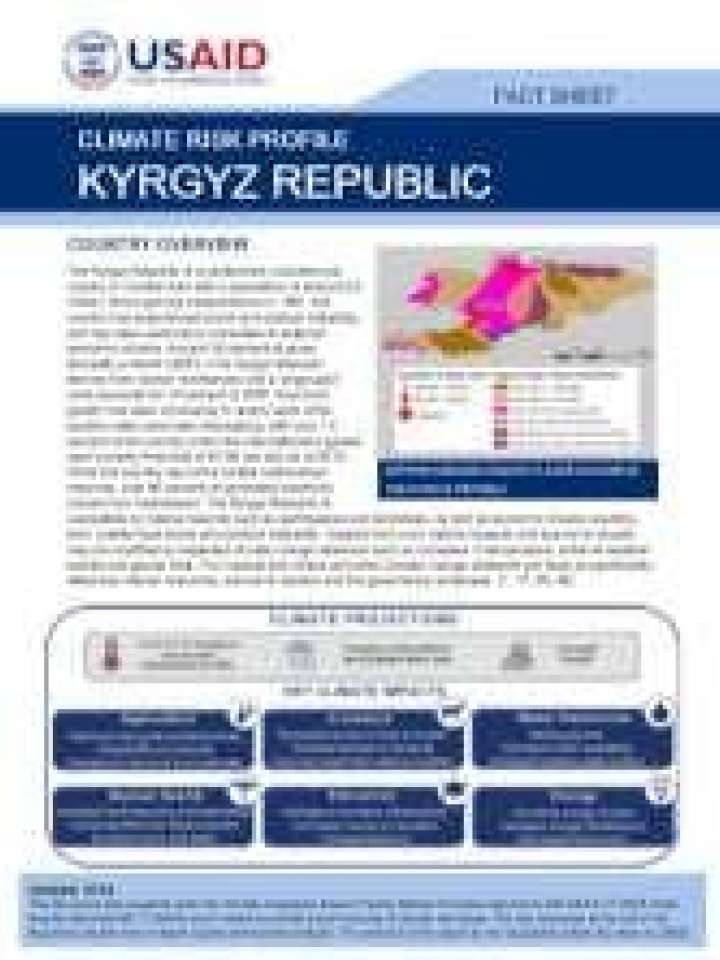Climate risk profile: Kyrgyz Republic
This profile provides an overview of climate risks in the Kyrgyz Republic, including how climate change will potentially impact six key sectors in the country: agriculture, livestock, water resources, human health, education, and energy. The brief also includes an overview of historical and future climate trends in the Kyrgyz Republic, the policy context outlining existing climate risk strategies and plans, and a list of ongoing projects that focus on climate adaptation.
Since gaining independence in 1991, the Kyrgyz Republic has experienced social and political instability, and has been particularly vulnerable to external economic shocks. Around 30 percent of gross domestic product (GDP) in the Kyrgyz Republic derives from worker remittances and a single gold mine accounts for 10 percent of GDP. Economic growth has been increasing in recent years while poverty rates have been decreasing, with only 1.4 percent of the country under the internationally agreed upon poverty threshold of $1.90 per day as of 2016.
While the country has some limited hydrocarbon reserves, over 90 percent of generated electricity comes from hydropower. The Kyrgyz Republic is susceptible to natural hazards such as earthquakes and landslides, as well as economic shocks resulting from volatile food prices and political instability. Impacts from such natural hazards and economic shocks may be amplified by expected climate change stressors such as increases in temperature, extreme weather events and glacial melt. The impacts from these and other climate change stressors are likely to significantly affect key natural resources, economic sectors and the governance landscape.
Explore further
